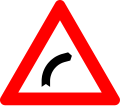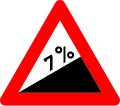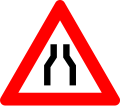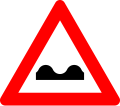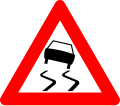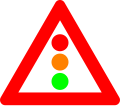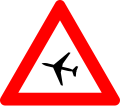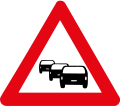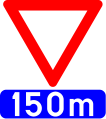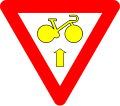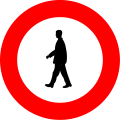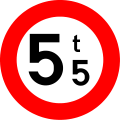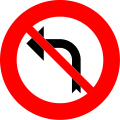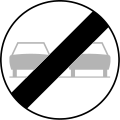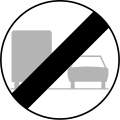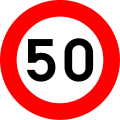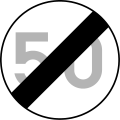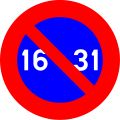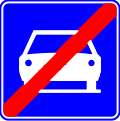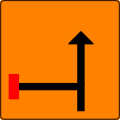F1a: Start of a built up area
F1a: Start of a built up area
F1b: Start of a built up area
F1b: Start of a built up area
F3a: End of a built up area
F3a: End of a built up area
F3b: End of a built up area
F3b: End of a built up area
F4a: Start of a 30 km/h speed zone
F4b: End of a 30 km/h speed zone
F5: Start of a motorway
F7: End of a motorway
F8: Tunnel
F9: Start of a motorroad
F11: End of a motorroad
F12a: Start of a
living street F12b: End of a
living street F13: Turn lane(s)
F14: Advanced stop line for bicycles
F15: Indication of the choice of direction
F17: Bus lane
F18: Bus and tram lane
F19: One-way road
F21: Pass on either side
F23a: Number of a national road
F23b: Number of a motorway
F23c: Number of an international road
F23d: Number of a ringroad
F25: Direction sign
F27: Direction sign
F29: Direction sign
F31: Direction sign (over motorways)
F33a: Direction sign
F33b: Direction sign (valley or stream)
F33c: Direction sign (touristic destination)
F34a: Direction sign (important public destinations)
F34b1: Direction sign (for cyclists, horse riders and pedestrians)
F34b2: Direction sign (for cyclists, horse riders and pedestrians)
F34c1: Direction sign (touristic destinations for cyclists, horse riders and pedestrians)
F34c2: Direction sign (touristic destinations for cyclists, horse riders and pedestrians)
F35: Direction sign (touristic destinations)
F37: Direction sign (hotels, hostels, restaurants ...)
F39: Direction sign (detours)
F41: Direction sign (detours)
F43: Municipal boundary
F45: Dead end
F45b: Dead end, except for pedestrians and cyclists
F47: End of roadworks
F49: Pedestrian crossing
F50: Cyclist and moped crossing
F50bis: Warning for cyclists and/or pedestrians when turning in
F51a: Crossing for pedestrians below ground
F51b: Crossing for pedestrians above ground
F52: Emergency exit in tunnel
F52bis: Emergency exit route
F53: Healthcare facility (hospital, nursing home ...)
F55: First aid post
F56: Fire extinguisher
F57: Stream
F59: Parking lot
F60: Parking garage
F61: Telephone
F62: Emergency telephone
F63: Fuel station
F65: Hotel or motel
F67: Restaurant
F69: Bar/café
F71: Camping area
F73: Trailer park
F75: Youth hostel
F77: Information point for foreigners or touristic information
F79: Reduction of lanes
F81: Lane displacement
F83: Cut through median
F85: Traffic allowed in both directions on a one-way road
F87: Hump
F89: Speed limit on certain lanes in ...m
F91: Speed limit on certain lanes
F93: Radio station broadcasting traffic information
F97: Reduction of lanes
F98: Emergency bay
F99a: Start of a road or part of a road reserved for pedestrians, cyclists horse riders and drivers of speed pedelecs
F99b: Start of a road or part of a road reserved for pedestrians, cyclists horse riders and drivers of speed pedelecs with segregation
F99c: Start of a road or part of a road reserved for farm vehicles, pedestrians, cyclists horse riders and drivers of speed pedelecs
F101a: End of a road or part of a road reserved for pedestrians, cyclists horse riders and drivers of speed pedelecs
F101b: End of a road or part of a road reserved for pedestrians, cyclists horse riders and drivers of speed pedelecs with segregation
F101c: End of a road or part of a road reserved for farm vehicles, pedestrians, cyclists horse riders and drivers of speed pedelecs
F103: Start of a pedestrian zone
F105: End of a pedestrian zone
F111: Cycle street
F117: Start of a low emission zone
F118: End of a low emission zone
F119: Start of an airport zone
F120: End of an airport zone


